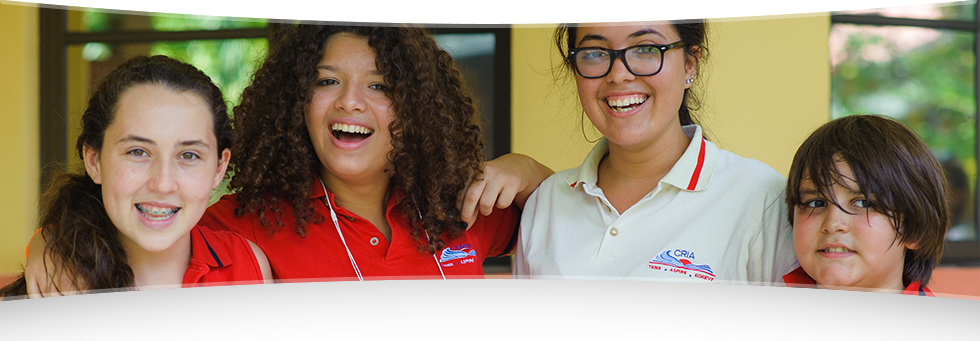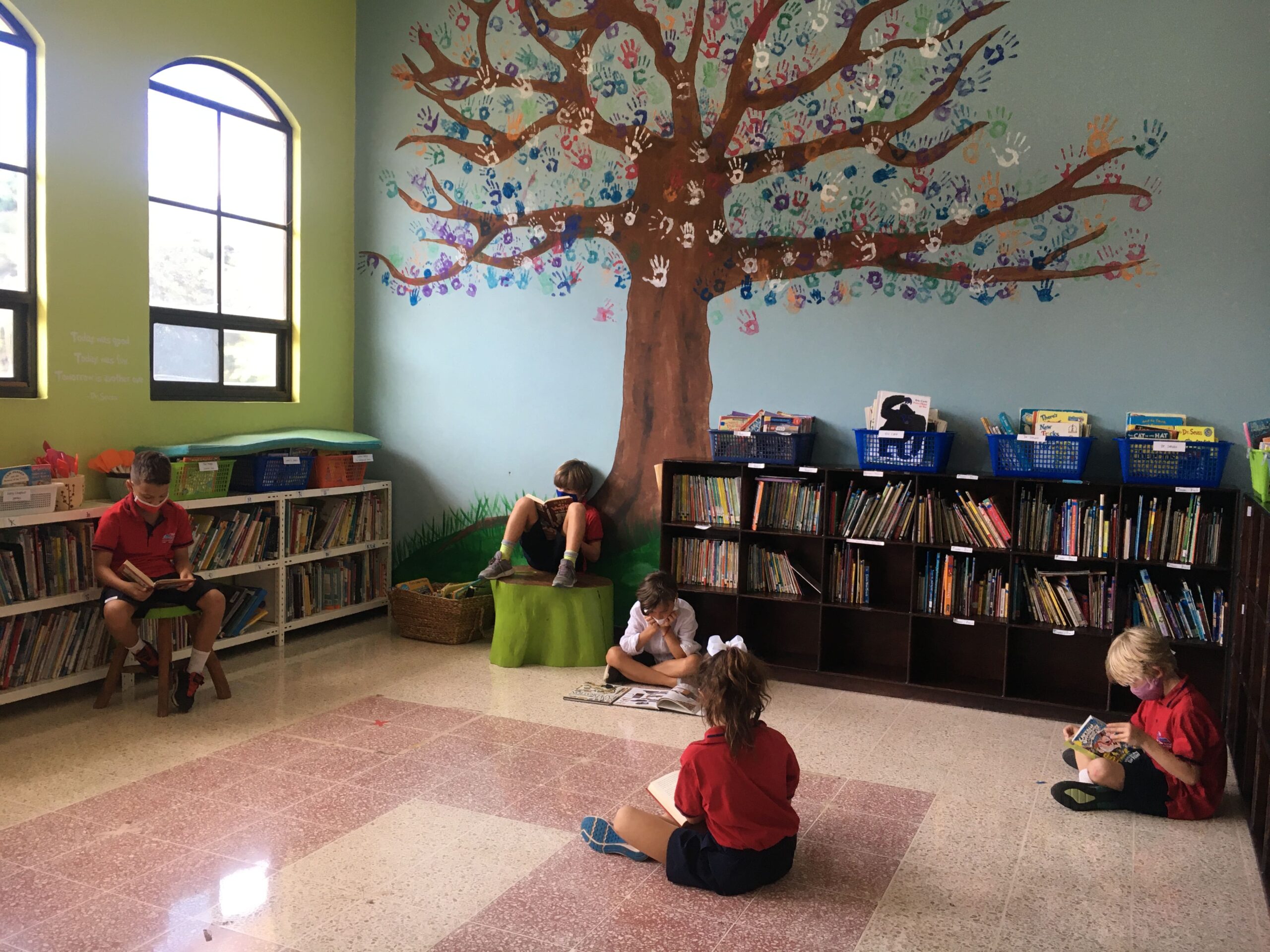Blog
Tales from, anecdotes on, and insights into international school education from a Costa Rican perspective.
Welcome to the CRIA community!
October 2022 Article:
The Unintended Consequences of the Pandemic:
Here are Three Ways Schools Can Get Back on Track
- All
- Costa Rica International School
- International Accreditations
- International College Preparatory Programs
- Special Education in Costa Rica
Find Your Fit: International School Culture and Values
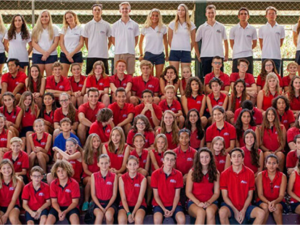
Post-Pandemic: Private Schools in Costa Rica Focus on Academics
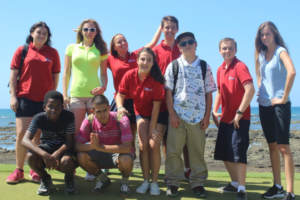
Education in Costa Rica, Considering: IB Diploma, A-Levels & AP/Dual Enrollment

9 Essential Questions to Ask When Considering International Schools in Costa Rica

5 Ways a Costa Rica Education Helps Students Stand Out on College Admissions
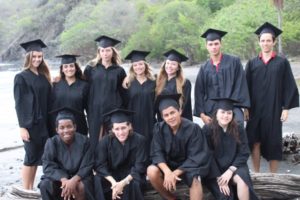
When Choosing an International School, Vote with Your Feet
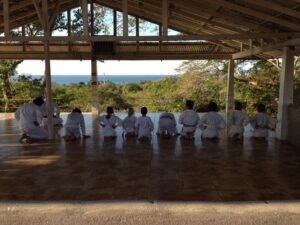
3 Questions to Ask When Choosing an Accredited International School

Special Education in Costa Rica International Schools: Learning Differences, Second Language-Learners, High Abilities, and Inclusion at CRIA

3 Essential Attributes of an International College Preparatory Program: A Parent’s Guide to the Best International Schools in Costa Rica
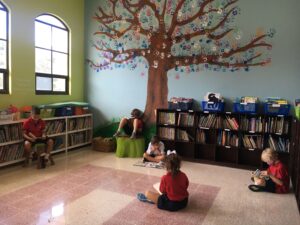
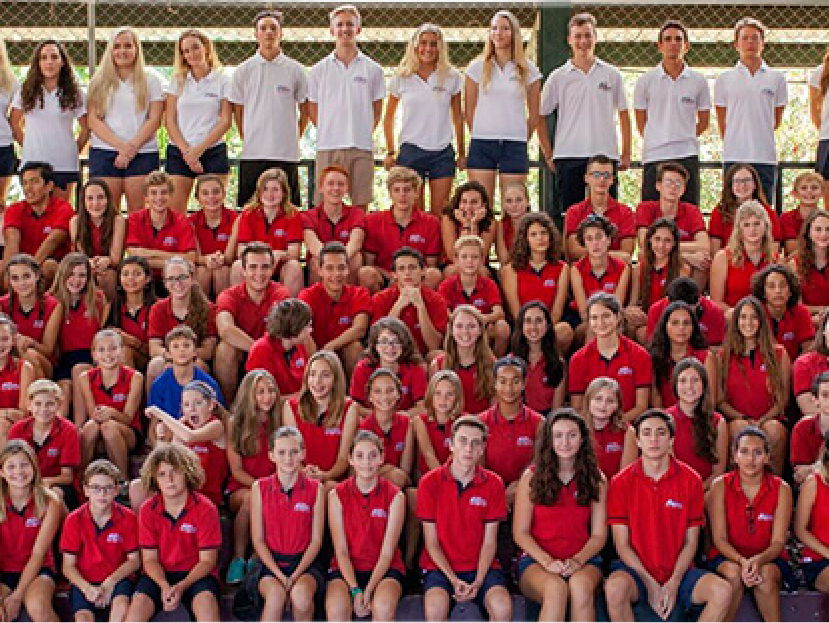
Find Your Fit: International School Culture and Values
Here’s a hot take: Too often, we, as a society, don’t fully address educational values. Many times, the emphasis is more on finding a school that’s close, or convenient, or has made the list of the best international American schools, the top international baccalaureate in Costa Rica, or a similar accolade. We’ll start by saying that, at CRIA, we believe in strong academics, college preparation, and education rooted in four moral domains. But before we get into that, let’s talk a little about our fascinating human history. Did you know that, since the first human, more than 117 billion people have walked planet earth? That’s nearly 15 times the number of people alive today. Just take a minute to consider the hundreds of thousands of years of cultural evolution that our ancestors have refined, accumulated, and passed down to us – the values that have evolved over time and spread around the world, leading to the most prosperous times in the history of humanity. Merely the thought is mind-boggling! And, while we have evolved and educated ourselves into industry and modernity and longer lifespans, did you know that the most common age today is a mere 26 years old? The next generation is young and we, as parents and educators, have so much to teach and share with them. (And still so much to learn, ourselves!) That’s where your and our values come into play. The Four Domains of CRIA School Values As custodians of the next generation, we must teach and pass on the collective wisdom held within the millennia of customs and traditions. We teach these things in many ways. At home, you model good and worthy behaviors. At the best international American schools, including CRIA, we strive to echo and reinforce those same values and behaviors. With this in mind, values are an important element in choosing a school for your child or children. And so, you may be surprised to learn that many schools considered “elite” or “progressive” or any other term, may not reflect your values. In subtle ways, they may even teach in contrast to your values. We want you to find the right fit. So, at CRIA, we’re honest and transparent, so you can make an educated and informed decision for your family. Because you allow educators a privileged place in your child’s life; it is our responsibility to educate and transmit the wisdom of the ages – values passed down through our customs and traditions, and then learned anew in every generation. At CRIA, we craft our values based on four domains: Moral Values Performance Values Intellectual Values Civic Values To help you determine whether your values align with ours, let’s do a deeper dive into each. Are You a Values Match? 4 Ways to Determine School-Family Compatibility Your child’s education is one of the most important decisions you’ll make in their young lives. As great parents, you want to make the right decision. That may involve anything from searching for the best international American schools to seeking out great extracurriculars. And yet, so often, when looking at schools, parents focus only on the academics. And while CRIA has very strong academics and offers a rigorous college preparatory program, your decision should be based on more than that. Because children are not just students; they are whole people. And education isn’t just about academics, either. In Costa Rica, we have a verb, educar. Its closest English equivalent (and cognate) is “to educate,” but in Spanish, educar is much more of a comprehensive picture – a call to raise good people, in every aspect. That’s what we believe in at CRIA: educando, not just educating our students. And that’s why values form such an integral part of our school’s ethos and offerings. Here’s how to see whether our values align: Moral Values When you were a school-aged kid, did you learn the Golden Rule? (We’re betting yes. We’re a generation!) The Golden Rule teaches us to “do unto others as you would have them do unto you.” In other words, it’s a call to treat others the way we hope to be treated. Traditionally, this has translated to moral values that include trustworthiness, respect, responsibility, fairness, compassion, and caring. At CRIA, we believe in teaching these values – these guiding principles that matter to the world, to our everyday lives, and to the way we teach and you choose a school for your children and family. Performance Values From small private schools to the very best international American schools, any quality school will have a strategic plan that develops the topics that matter most to student growth and the school’s community. What sets the great apart from just the good is a strategic plan that incorporates values. For CRIA, […]
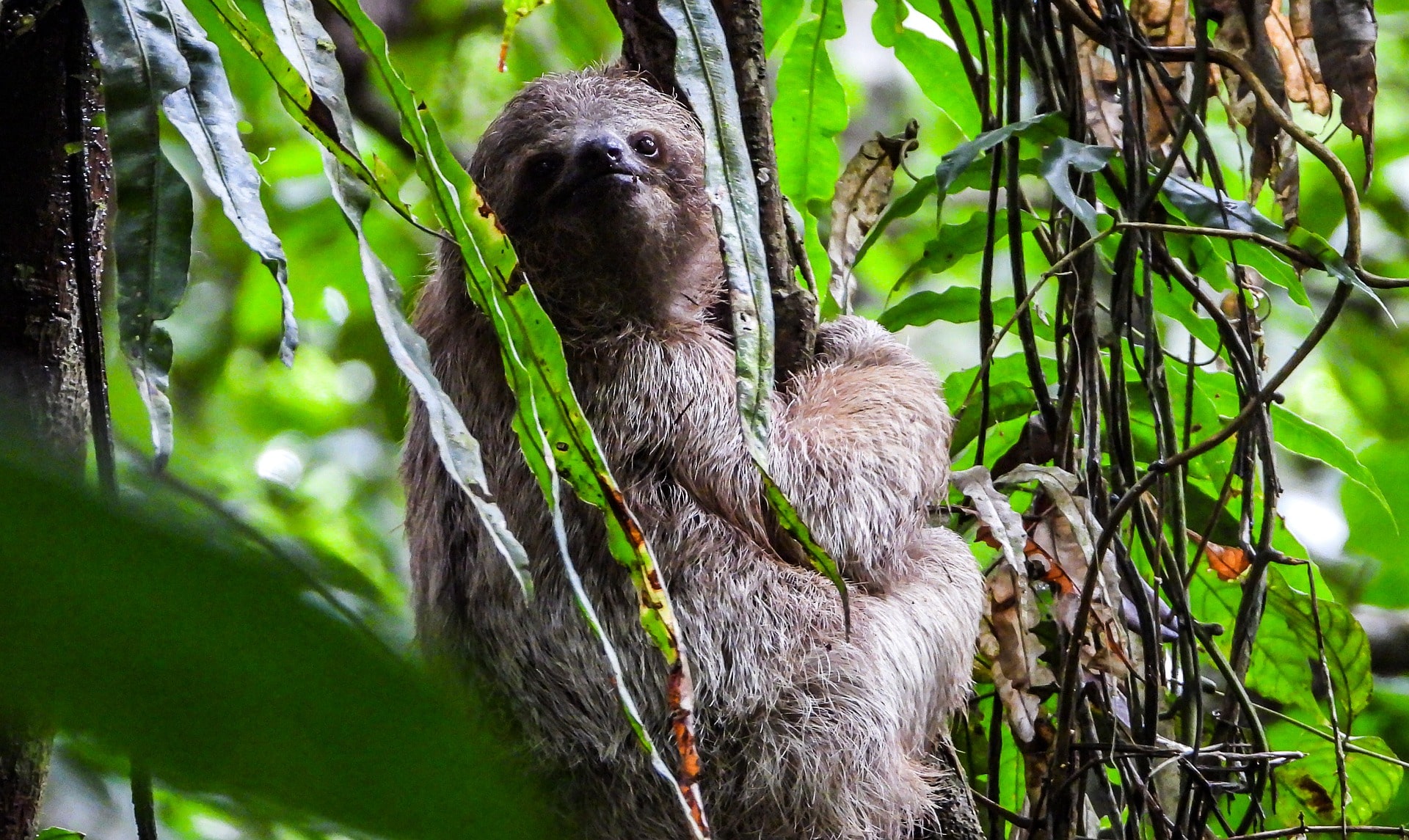
Costa Rica is one of the planet’s most biodiverse destinations, packing a whopping 5% of the world’s biodiversity (read: plant and animal life) into just 0.03% of the Earth’s surface. In other words, the country houses more (much more) than its fair share of species, including eight of our favorite exotic animals in Costa Rica! From brilliantly colored toxic frogs and croaking toucans to rhino relatives and not-so-slothful sloths, we’re sharing a few of the weird, the interesting, and the exotic. Let us know which ones you’ve already spotted and which are still on your list! Amphibian: Red-Eyed Tree Frogs Agalychnis callidryas One of the most iconic (and adorable) exotic animals in Costa Rica, the red-eyed tree frog is a beloved rainforest amphibian known for its neon-green body, electric blue-striped sides, orange webbed feet, and brilliant red eyes. They are ambush predators (their favorite snacks are flies, moths, and crickets) with sticky tongues (and feet). However, despite their brilliant coloring, red-eyed tree frogs are not poisonous. (Want to know about poisonous frogs? Read down our list!) Fun Fact: Scientists believe that red-eyed tree frogs evolved their attention-catching, scarlet eyes to startle predators for a few critical seconds, thus allowing the frogs to escape predation. This evolution, which other animals also employ, is appropriately known as “startle coloration.” Mammal: Sloths (Two- and Three-Toed) Choloepus hoffmanni and Bradypus variegatus Costa Rica is home to both Hoffman’s two-toed sloths and brown-throated three-toed sloths, which, contrary to popular belief, are not actually slothful. Indeed, these adorable vegetarians have adapted their slow movements to account for their low-calorie, leaf-forward diets. If you’re itching to spot a sloth, know that Hoffman’s two-toed sloths are nocturnal, meaning they’re awake at night, while brown-throated sloths are diurnal – they are awake by day and night. That means, for tours, it’s usually easier to see three-toed sloths, which are also a bit more active than their two-toed counterparts. Fun Fact: Though we tend to group sloths together as “sloths,” Costa Rica’s two species are not only different species, but completely different genera AND families. They belong only to the same order! Bird / Reptile: Keel-Billed Toucans Ramphastos sulfuratus Meet the real Toucan Sam! Keel-billed toucans, also known as rainbow-billed toucans, are one of the world’s most colorful birds. Their orange, green, red, and blue bills account for about a third of the birds’ total size! But toucan bills are light and hollow – made of reinforced bone, covered in keratin (think: human nails) – and so, they don’t hinder flight. In fact, the keel-billed toucan uses its bill for several purposes: In addition to gathering food, fencing with rivals, and attracting a mate, scientists postulate that these massive bills can even help with temperature regulation. Talk about multi-tasking! Fun Fact: What do you think a toucan sounds like? The reality is that toucans all sound vastly different from one another. But keel-billed toucans could almost earn a spot on our list of exotic animals in Costa Rica for their call alone: a throaty croak that will have you swearing that you’re being serenaded an incredibly vociferous frog calling for a mate. (Click through for a soundbite!) Reptile: Basilisk Lizards Basiliscus (Genus) There are three types of basilisk lizards in Costa Rica: the common basilisk (Basiliscus basiliscus), the emerald basilisk (Basiliscus plumifrons), and the brown basilisk (Basiliscus vittatus). They’re all a joy to spot, although the emerald basilisk, with its celestial blue spots, is perhaps the showiest. Their genus name, Basiliscus, is derived from the Greek basiliskos, or “little king.” While this may refer to a white “crown” on its head, it’s also possible that it’s a nod to the mythical King of Serpents: The legendary basilisk, which features prominently in Harry Potter and the Chamber of Secrets, and was rumored to turn humans and animals to stone with a single glance. Fun Fact: Basilisk lizards are sometimes known as “Jesus Christ lizards,” due to their ability to walk on water. Kind of. Basilisks are incredibly fast; this, paired with their light weight, allows them to skitter across the water’s surface. Go fast enough, and they don’t sink. It’s really a sight to see! Insect: Morpho Butterflies Morpho (Genus) One of the most impressive and showy butterflies on Earth, blue morpho butterflies are classified into over a half-dozen species, including many sub-species. You’ll find this flashy flutterer throughout the country, although blue morphos do favor forests and fields near water sources, including rivers and the ocean. Blue morphos employ two defense tactics to protect themselves: First, they practice a “flash and dazzle” – a dance of light-on-blue and fluttering wings, designed to confuse predators – and second, they use mimicry, via their closed wing “eye spots,” to convince predators that they’re confronting a larger animal (likely a bird). Fun Fact: […]
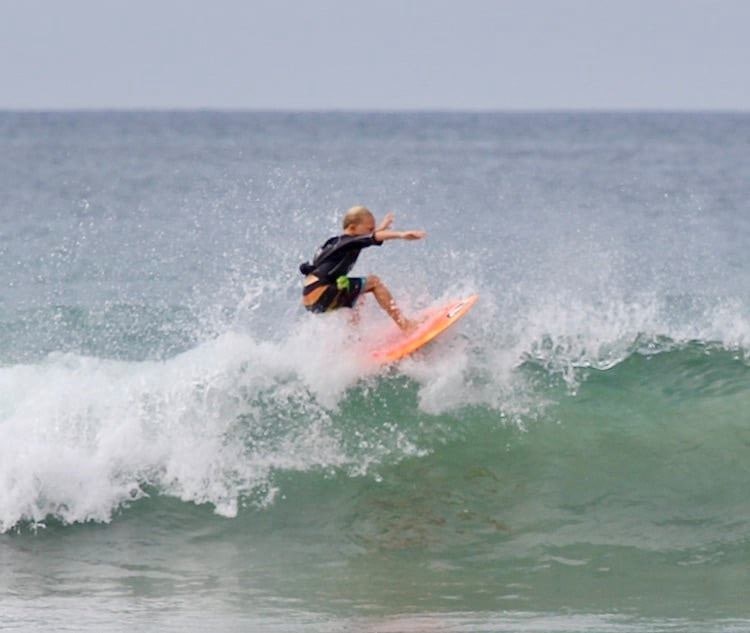
Living on Costa Rica’s Gold Coast means year-round sun, sand, and access to Guanacaste surf breaks. We can stretch our skills and test our mettle, whenever the mood strikes. That said, there’s so much more time to “hang 10” when you’re hanging out on summer break! And so, as we roll through mid-summer, we thought we’d share some insight into some of what CRIA families have been enjoying this summer. And by that, we really mean surf breaks. Because surfing is almost a way of life here. Grabbing your board and heading into the Pacific becomes as natural as riding a bike or taking a walk. It’s just what we do. Well, one of the things we do! From brand-new beginners to the most confident experts, CRIA students and their families carve out plenty of time over the summer to test their surf skills at beaches close to home. Here are a few of our favorite spots to while away a day on your boards: Ollie’s Point We wouldn’t typically kick off this list with the famous Ollie’s Point – a surf break for experts only and accessible solely by boat! – but hey, alphabetical order… And so, let us introduce you to the fast and furious, right-breaking Ollie’s Point, a thrilling and challenging choice destined for the advanced surfers in your family. Because this is an unabashed, experts-only, serious-boarders kind of place. And it’s so worth it, considering that there are usually very few crowds! If you go, know that Ollie’s Point, also known as Potrero Grande, promises a fast and perfect break that hits a rocky sea bottom. (See above, re: experts only.) What’s more, those breaks can often eclipse 8 feet high! Tip: Whether you’re there to surf or to spectate, be sure to bring plenty of food and water, as the beach is accessible only by boat. Playa Avellanas (Lola’s and Palo Seco) Playa Avellanas, located just south of Tamarindo in Hacienda Pinilla, offers one of those Guanacaste surf breaks that can go either way: On a calm day, waves are small and ideal for confident beginners but on a big day, this is an advanced surfers only kind of place. (When in doubt, inquire into current conditions.) Gather your family and grab your boards, and head out into the waves that crash in front of Lola’s Restaurant or Palo Seco. Here, you’ll find consistent surf that doesn’t churn and froth. Be sure not to drift south, though, as the Playa Avellanas River Mouth and the beach’s famous surf break, Little Hawaii, qualify as Big Daddies every day of the week. Playa Tamarindo (Capitán Suizo) If you’re looking for a true beginner break – say, a spot to take your first lesson or try to catch a few solo waves for the first time – then there are few choices better than the slice of Tamarindo Beach directly in front of Hotel Capitán Suizo. (Stand with the hotel at your back and you’re looking at the right place!) The waves here are perfect for the inexperienced among us: gentle, mild, and delivering minimal pull, making it easy to practice your new skills without any major added challenges. A small (literally) tip, though: If there’s no one in the water, the waves are likely too small. Don’t worry, though; the surf should pick up again in an hour or so! Playa Grande (Casitas) Named for the casitas that line the beach here, the Casitas stretch of Playa Grande starts at the river mouth. (Remember to always, always pay for the lancha across the river, which is a favorite spot for crocs!) Fair warning: Casitas is another Guanacaste surf break that can go either way: On a calm day, the surf here is perfect for confident beginners, who will have a chance to test their pop-ups and balance on slightly more challenging waves. But on a bigger day, Casitas is better suited to intermediate surfers. Again, if you’re unsure, ask surfers in the water about current conditions. (They’re not always easy to eyeball.) Playa Junquillal Once a hidden gem, Playa Junquillal has become a definite favorite among Guanacaste’s surfing families. Again, though, this is a beach where the surf can go either way: on a calm day, even beginners can handle Junquillal’s waves but on a big day, this is experts only need apply. If you hit on the right conditions, though, Junquillal is incredibly fun and offers high learnability. That’s because it promises a sandy beach break and just a two-minute paddle-out, so you and the kids can go again and again and again. Aim for high tide, in order to hit on waves tall and long enough to make them worth your while! Playa Marbella If you’re looking for the kind of Guanacaste surf that challenges […]
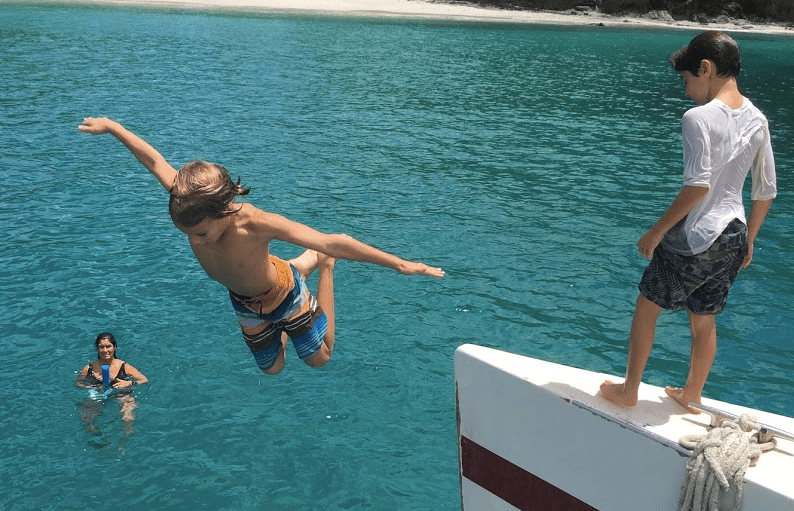
You may have heard that Costa Rica marine life is incredibly biodiverse, but do you know just how biodiverse it is? In point of fact, nearly 7,000 marine species swim Costa Rican waters, representing a full 3.5% of all marine life in the world. That’s right, in the entire world. All, in a country smaller than West Virginia. (May we never cease to be impressed by this incredible country!) What’s more, marine biologists and other experts hypothesize that there are likely hundreds of thousands more species awaiting discovery and documentation. Could you or your children be the next diver or snorkeler to snap a photo of heretofore undiscovered Costa Rica marine life? While we can’t answer that question, we can share a few of our most breathtaking, jaw-dropping, adrenaline-inducing, bucket-list species that you can spot right here, in our Pacific waters. Welcome to your own backyard. For simplification and classification purposes, this post will stick to marine reptiles. Our mammalian friends, including Costa Rica’s whale and dolphin species, will be featured in a future post! And now, your underwater wonders: Rays (7 species) “Giant Manta Ray” by timc74 is licensed under CC BY-NC-SA 2.0 . We might be about to blow your kids’ minds, but did you know that, as elasmobranchs, rays and sharks are very closely related? That said, ray fossils date back 200 million years earlier than sharks and, in fact, these magnificent creatures are thought to have evolved from flattened shark species! Here are seven ray species you can find off Costa Rica’s Pacific coast: Bullseye Electric Ray (Diplobatus ommata): A true eye-catcher (and adrenaline-stoker), this electrified ray inhabits the Catalinas Islands and can deliver a punch up to 37 volts! Luckily, they’re easy to spot, thanks to the – well, spot or bullseye in the center of their backs. Giant Manta Rays (Mobula birostris): Truly one of the underwater world’s most magnificent and ethereal sights, giant mantas can weight up to 3,000 pounds and have an incredible wingspan of up to 30 feet! They frequent the Catalina Islands (January through March), as well as the Islas Murciélago/Bat Islands (June through August), and the general Pacific Coast (February and March). Golden Cownose Ray (Thinoptera steindachneri): Known to gather by the hundreds or even thousands, these fierce hunters have specially evolved to eat mollusks, like clams and oysters. Leopard Round Stingray (Urobatis pardalis): Wildly beautiful but definitely a creature to leave alone, these spotted stingrays have sharp, short tails that pack a serious wallop. Longtail Stingray (Hypanus longus): Solitary or in pairs, these stealthy stingrays camouflage themselves beneath the sand, lying in wait for fish, crabs, and other tasty tidbits. Sicklefin Devil Rays (Mobula tarapacana): If you ever spot a ray jumping the ocean’s surface, it’s likely this fun-loving fish is trying catch your attention! (Or snag a good meal… the jury’s still out on the reasons behind this behavior.) Spotted Eagle Rays (Aetobatus laticeps): This gorgeous ray is frequently photographed, so you’re probably familiar with its lovely color pattern. But did you know that spotted eagle rays are incredibly social, often travelling in schools of 200+? Sea Turtles (4 species) “The Green Sea Turtle” by rexb is licensed under CC BY-NC-SA 2.0 . Sea turtles are one of Costa Rica’s most iconic sights – and one that most people only spot onshore, when the turtles are nesting or their babies are hatching! That said, sea turtles are common sightings for Guanacaste snorkelers, divers, and boaters. See which ones you can spot! Green Sea Turtles (Chelonia mydas agassizi): Named for their green skin (and not their dark shell), green turtles often swim up to 1,600 miles, one way, every year, on their travels between nesting and feeding grounds. Hawksbill Sea Turtles (Eretmochelys imbricata): Named for their hawk-like nose, critically endangered hawksbills have a spectacularly beautiful shell and are a rare sight in Costa Rica. Leatherback Sea Turtles (Dermochelys coriacea): The world’s largest sea turtle and one of the largest reptiles on the planet, leatherbacks can weigh up to an incredible 1,100 pound! They are named for their soft, oily shell – a sharp (or rather, soft) contrast to other sea turtles’ hard, bony carapaces. Leatherback nest at our very own Playa Grande, within Las Baulas National Marine Park! (Una baula is Spanish for leatherback.) Olive Ridley Sea Turtles (Lepidochelys olivacea): Olive ridley turtles are known to return to the very shores on which they were born. In Costa Rica, this phenomenon is known as an arribada, when thousands of nesting turtles come to shore at once. Spot them at Playa Ostional and Playa Nancite, on the Nicoya Peninsula, from June-December. Sharks (5+ species) “Bull shark” by Daniele Colombo is licensed under CC BY-NC-SA 2.0 . Did you know that sharks have an incredible six senses, which help them […]

There is so much to love about where we live: Guanacaste’s Gold Coast, where your days are defined by outdoor explorations, warm sun, and crashing waves. It’s paradise on earth and yet, sometimes you want to get out and discover all the many other Costa Rica destinations, near and far(ish), that we can so easily visit – especially during our summer vacation! Because there’s so much diversity and things to love about this country we call home. That’s part of why you’re here, after all: You love Guanacaste but you also see summer as a chance to explore further afield. Because this is the season to load up the car and take advantage of long weekends, to step outside the familiar and road trip as a family, while your kids are still willing. And so, from the wildly rugged to the off-the-grid, from puffing volcanoes to Afro-Costa Rican culture,from endangered wildlife to coral reefs, from indigenous communities to adventure hotspots, here are four Costa Rica destinations that promise adventure, inspiration, cultural awareness, and forever memories for your family this summer: Discover Tigers and Bears and… Tapirs? Oh, My! “Bairds Tapir, Costa Rica” by The Expert Vagabond is licensed under CC BY-NC-SA 2.0 . Here’s a fun cultural fact: Did you know that Costa Ricans often refer to jaguars (Panthera onca) as tigres, or tigers? And here’s another: In Spanish, anteaters are known as osos hormigueros, or “anthill bears.” (Spot one in the wild and you’ll immediately see why!) And so, when you and your family want to put eyes on tigres and osos in Costa Rica, we recommend booking a trip to the Osa Peninsula, one of the country’s last remaining wild frontiers and National Geographic’s “most biologically diverse place on earth.” It’s a jungle out there, literally! Located at the southern tip of the Pacific Coast, the Osa Peninsula and its famous park, Corcovado National Park, are one of the most beloved Costa Rica destinations. Still almost completely rugged, this rainforest-swathed peninsula is home to mangroves and dense primary forest, former gold mining towns and gorgeous Pacific coastline. It’s also home to some of the best wildlife-watching in Costa Rica. We’re not talking your “everyday” wonders, like endangered Central American squirrel monkeys (Saimiri oerstedii) and brilliant scarlet macaws, but also almost only-on-the-Osa sights, including all of Costa Rica’s wild cats (jaguars, pumas, jaguarundis, ocelots, margays, and oncillas); the endangered Baird’s tapir (Tapirus bairdii), the largest land mammal native to Central America; and the northern tamandua (Tamandua mexicana), a type of nocturnal anteater. Go Off the Grid & Into Rural Costa Rican Life Treat your family to rural and authentic Costa Rica with a completely off-the-grid experience, which you can find at many rural destinations throughout the country. From ranches and lodges to cabins and family farms, Costa Rica’s rolling countryside, coffee fields, and savannah ranch land still house many of these off-the-grid (or mostly so) rural opportunities to learn about what life was like in Costa Rica, half a century ago. Create that perfect blend of family time and wonder – the kind of Costa Rica weekend getaway that makes everyone forget they even have smartphones. That’s because your time will be spent swimming in clear mountain rivers, horseback riding through scenic meadowland, milking cows, and dining on the hearty Costa Rican fare that has sustained the country’s agricultural workforce for centuries. Of course, this kind of experience is about more than just what you do; it’s about your family’s experiences. Because there’s so much to enjoy about temporary off-the-grid living, like dining to the glow of candlelight, having time for heart-to-hearts, and simply enjoying the beauty all around you, no distraction in sight. For a few magical days, it feels like you’ve stepped into another century! Smoking Hot Lava Mountains & Natural Hot Springs If your kids have been bugging you to do something really adventurous, then it’s probably time to get up close and personal with Rincón de la Vieja National Park! You can’t go wrong at the park’s beloved Las Pailas sector, which offers up boiling mud pots, a volcancito, steaming fumaroles, seasonal waterfalls, and other incredible sights, courtesy of the park’s namesake volcano. From first-hand experience, we can say that this is as much jaw-dropping wonder as we’ve ever seen packed into one single trail! And, though you could visit RdlV National Park as a daytrip (it’s <73 miles from CRIA), we’d recommend settling in for at least a weekend visit. Many lodges pepper the slopes that surround the volcano – technically, 9 separate but contiguous craters that, together, form the largest volcano in the Guanacaste Mountain Range – and create an adventure hotspot in Guanacaste. Here, you’ll find everything from hiking and horseback riding to canopy ziplines and whitewater rafting, from canyoning and mountain […]

Educational Day Trips, Part 2: 4 (More) Day Trips to 4 National Parks in Guanacaste, Costa Rica
Moving to and living in Costa Rica is an everyday learning experience. Beyond learning how to surf or learning how to speak Spanish, your new home offers up a variety of lessons and experiences and moments of wonder. We’ve already suggested (see Part 1) four national parks in Guanacaste, Costa Rica for your family’s educational (and adventurous) day trip, but we couldn’t stop there! The truth is, our incredible province is home to many diverse and wonderful national parks. From wetland ecosystems to tropical dry forest, from blue rivers to towering volcanoes, this new batch of parks promises to entertain and wow you, as much as they do teach you something about this new land you call home. For Wetland Ecosystems: Palo Verde National Park Distance from CRIA: 47.5 miles / 76.6 kms Fun Fact: Palo Verde’s wetland ecosystems are largely comprised of freshwater, for example marshes (which have no trees but lots of grasses) and swamps (which are comprised of trees and woody plants). But did you know that freshwater accounts for only 3% of the world’s total water? The rest is saltwater (which humans, at least, can’t survive on). We need to protect our wetlands and especially the world’s freshwater habitats! Located at the mouth of the Tempisque River, Palo Verde National Park is an important watershed for all major area rivers – a hugely vital, wildly diverse wetland sanctuary, even more essential due to its location within Costa Rica’s driest province (that’s us, Guanacaste!). The 45,500-acre park unfolds over 15 different habitats, from pastures to evergreen forest, but most visitors come for the wetland ecosystems: rivers, mangrove forests, salt ponds, and marshes, home to migratory and year-round resident birdlife – up to 250,000 birds at once, sometimes! What’s more, Palo Verde houses the largest concentration of waterfowl and shorebirds in Central America, so you’ll have great chances of spotting, herons, egrets, spoonbills, ibis, grebes, and more. (In fact, it’s arguable the most popular of national parks in Guanacaste, Costa Rica for birdwatching.) Of course, the park’s wetland ecosystems are a draw for more than just birdlife: Palo Verde’s mammal and reptile species are wonderfully impressive, too: with a bit of luck, you just might spot white-faced monkeys, howler monkeys, coatimundis, crocodiles, armadillos, peccaries, and even Costa Rica’s largest population of jaguarondi (a small wildcat)! Additional Resources: CREA: Parque Nacional Palo Verde (Spanish) NatGeo: Wetland Ecosystems Kids Discover: What Are Wetlands? For Chemistry (of the most colorful kind): Tenorio Volcano National Park Distance from CRIA: 100 miles / 162 kms Fun Fact: Have you ever seen a Baird’s tapir? These endangered mammals – relatives of the rhinoceros, believe it or not! – are native to Costa Rica’s lowland forest, including here at the park, which protects their important habitat. (The biggest threat to tapir populations is habitat loss.) They’re particularly common at their eponymous (eponymous means “named for”) lake, Tapir Lake, where they often gather at twilight for a cool drink. You’ve almost certainly seen the photos (even if you didn’t realize you were looking at Tenorio Volcano National Park), and now it’s time to see those scenes with your own eyes: Río Celeste, the Celestial River, a baby blue river and waterfall, and one of Costa Rica’s most iconic sights. Many people, even those who visit, don’t realize that Río Celeste is only one of the many attractions at Tenorio Volcano National Park. So, let’s start at the beginning: True to name, Tenorio Volcano National Park is home to Tenorio Volcano. And Tenorio Volcano is the reason that Celeste River exists. It all comes down to chemistry! Here, about halfway along the park’s trails, you’ll come to the teñidero, or dye zone, where two rivers meet and their waters combine colloidal silica and copper sulfate, which react with sulfur (thanks, volcano!) to create the river’s baby-blue hues. And it really is blue: Scoop some into your hand and it’s still milky blue – pretty incredible! What’s more, your hike will also bring you past bubbling mud pots, hot springs, thermal geysers, and other volcanic sights. Additional Resources: SINAC: Parque Nacional Volcán Tenorio (Spanish) S. Geological Survey: Water Color National Geographic: Baird’s Tapir For Crossing the Continental Divide: Guanacaste National Park Distance from CRIA: 57.8 miles / 93 kms Fun Fact: The Continental Divide (sometimes called the Great Divide) is actually a mountain ridge that runs north-south from Canada into the United States, Mexico, and Central America. To its east, all rivers and streams flow out to the Gulf of Mexico, the Atlantic Ocean, and the Caribbean Sea; to its west, all rivers and streams flow out to the Pacific Ocean. Created in 1989 to link the vast habitats and ecologies between Santa Rosa National Park and the high-altitude cloud forests surrounding Orosi Volcano and Cacao Volcano, Guanacaste National Park is a […]
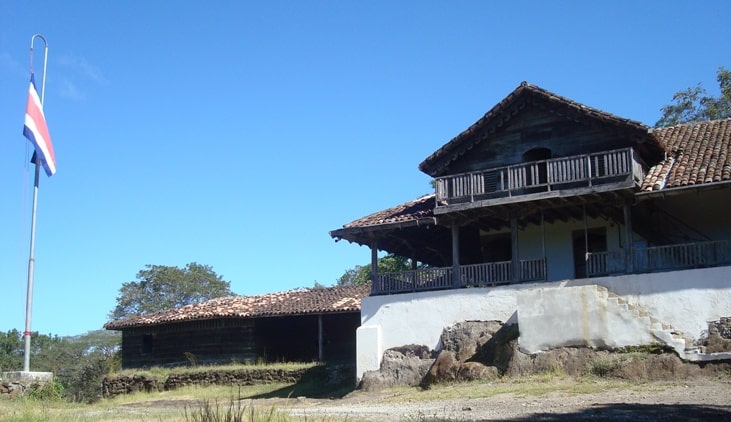
One of the best things about living near Tamarindo is the sheer variety of things to do. And, while the beaches and the surf get much of the glory, the truth is that there are so many other sights and sites to explore. Today, we thought we’d introduce you to Part 1 of our series on Educational Day Trips from CRIA, beginning with five Guanacaste national parks and wildlife refuges. For each day trip, we’ve given you a jumping-off point: an overview of the park, why it made our list, some fun facts, and additional resources. But really, these parks are so vast and wondrous, they have many lessons to teach and new experiences to usher into your family’s life. Enjoy! For Volcanology & Geothermal Science: Rincón de la Vieja National Park Distance from CRIA: 72.7 miles / 117 kms Fun Fact: Volcanology, which is sometimes spelled vulcanology, has nothing to do with Star Trek, a bit to do with ancient Rome, and everything to do with volcanoes. The word is derived from the Latin word vulcan, for Vulcan, the ancient Roman god of fire. It’s an appropriate etymological root for the study of volcanoes, lava, and magma! There is so much to love about Rincón de la Vieja National Park and its eponymous volcano. We’ll begin with some impressive statistics: This 35,336-acre national park is home to 32 rivers and streams, 300 bird species, primary tropical dry forest and cloud forest, and Rincón de la Vieja Volcano – an active behemoth comprised of 9 separate but contiguous craters, which together form the largest volcano (of 5) in the Guanacaste Mountain Range. Clearly, there’s plenty to explore and learn about here. (It’s one of the most popular Guanacaste national parks for a reason!) And there’s no place better to do it than the Las Pailas Sector – RdlV National Park is divided into two distinct sectors; the other is Santa María, which offers an 8-hour round-trip hike to the volcano (when safety permits) – which promises exploration and jaw-dropping sights, including boiling mud pots (pailas, appropriately!), steaming fumaroles, hot springs (note: not for soaking!), volcanic craters, seasonal waterfalls, and more. Additional Resources: SINAC: Rincón de la Vieja National Park (Spanish) NatGeo: 17 Explosive Volcano Facts Earth Science: Volcanic Landforms and Geothermic Activity For Sea Turtle Conservation: Las Baulas National Marine Park & Ostional Wildlife Refuge Costa Rica is not only home to four sea turtle species – leatherbacks, olive ridleys, green, and hawksbill – but to incredibly important sea turtle nesting beaches. And that’s extra important, when you consider that many species will only nest on specific beaches – sometimes, the very beach where that turtle hatched! It’s no wonder that Costa Rica takes sea turtle and habitat conservation so seriously. Las Baulas National Marine Park: Distance from CRIA: 8 miles / 13 kms Fun Fact: Leatherback sea turtles are the world’s largest sea turtle – and also one of the most unique! Not only can they measure 6 feet (2 meters) long and weigh up to 1,500 pounds (900 kgs), but these ocean giants are the only sea turtle species to swap a hard outer shell for one that’s soft (like leather) and flexible. Did you know that there’s a national park practically at our front door? ‘Tis true! El Parque Nacional Marino Las Baulas, or Las Baulas (Leatherback) National Marine Park is the nearest of the Guanacaste national parks and occupies an impressive 43,240+ acres (175 km2) – but only about 1,900 acres (7.7 km2) are on land! The balance belong to the Pacific: protected ocean waters that welcome nesting sea turtles every year. Indeed, this coastal park is one of the world’s largest leatherback turtle nesting sites, hosting hundreds of nesting mothers every year. And that’s incredibly important, when you consider that leatherbacks are an endangered species and their world populations are on the decline. Notably, Las Baulas National Park is also home to another of Tamarindo’s ecological riches: the Tamarindo Estuary and its incredibly biodiverse (and biologically valuable) mangrove forests. Grab a kayak and go explore! Ostional Wildlife Refuge: Distance from CRIA: 43.4 miles / 69.8 kms Fun Fact: Olive ridley sea turtles weigh 80-100 pounds as adults but, when born, weigh just 12 to 22 grams – about 3 to 4 of those sugar packets you find on restaurant tables! If you want to go big on wow factor, you can’t go wrong at Ostional Wildlife Refuge (note: this is a national wildlife refuge, not technically one of our Guanacaste national parks). One of the world’s most important sites for nesting sea turtles, Ostional protects 1,150+ land acres and almost 20,000 marine acres – ocean wilds reserved for the olive ridley sea turtles that nest here. And about that wow factor: Ostional Wildlife Refuge is the site of […]
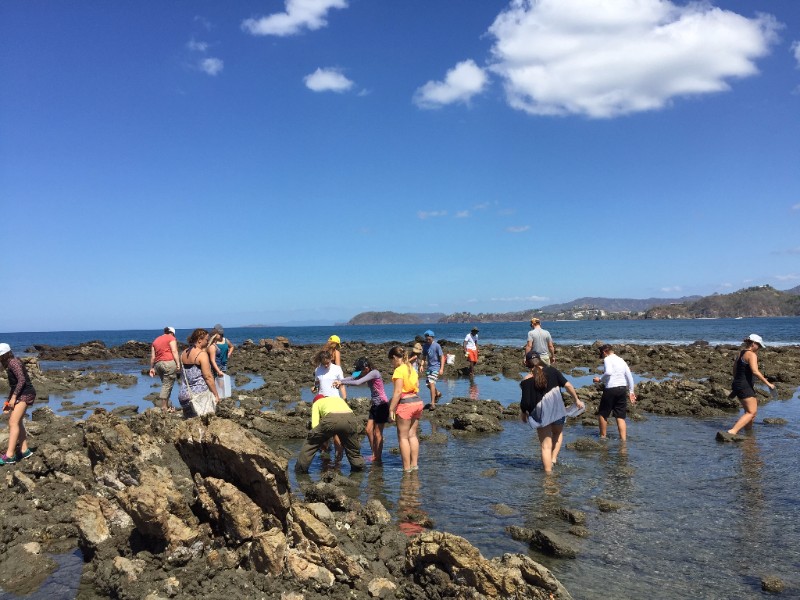
With so many new families joining CRIA – and a summer full of fun, fast approaching! – we thought we’d share a few of the best beaches in Guanacaste: easy day trips from wherever you call home, and not one more than 40 minutes from CRIA. How’s that for a spectacular place to call your new home? The 10 Best Beaches in Guanacaste: So, without further ado, here are our personal picks for the top 10 best beaches in Guanacaste. From north to south: Playa Dantas / Playa Dantitas Playa Danta and its neighboring Playa Dantita (“Little Danta”) belongs on your list, but perhaps not for the reasons you think. While so many of our region’s beaches offer powder-soft white and cinnamon sands, Playa Danta offers up grayer hues, a pebbled beach, and the kind of rocky outcroppings perfect for young hands and legs to scramble over as they look for mollusks. Here, you can while away the hours searching for sea life, relaxing in solitude, and appreciating the ocean ecosystems of your new home. Sugar Beach Known in Spanish as Playa Pan de Azúcar, Sugar Beach is a must-visit for anyone new or seasoned to Guanacaste. Indeed, this powder-puff beach is one of the prettiest (and least touristed) in the region, thanks in part to the natural trails that lead from Playa Prieta to Sugar Beach. Make an afternoon of it and hike up to the lookout point, known as the Mirador Playa Prieta, and you’ll soon discover what all the fuss is about. Playa Brasilito This one can be a little confusing: Both a town and a beach, Brasilito is sandwiched between some of Guanacaste’s biggest resorts. And yet, it has eschewed the glitz and glam in exchange for authentic flavor and approachability. And we love Brasilito for that. This is the kind of place you have to check off your list, when you call yourself a local. For the purposes of this list, though, we’re referring to Brasilito Beach, home to cinnamon sands, the blue Pacific, and mid-sized waves that are usually welcoming to swimmers. As always, though, check local conditions (read: ask someone) before getting into the water! Playa Conchal Any list of the best beaches in Guanacaste will include Playa Conchal, and for very good reason: It is simply one of the best! Named for the tiny, pink seashells – concha means “shell,” in Spanish – that dot its coastline, Playa Conchal is as strikingly beautiful as it is welcoming. And it is strikingly beautiful. What Playa Conchal is not: a great swimming beach. Those waves make for excellent white noise and beautiful blue contrasts against shimmering shell-sands, but do not often make a great choice for swimming, especially for families. Playa Minas Here’s a fun, in-the-know, you-gotta-be-a-local beach: Playa Minas, which, according to maps, does not exist. It’s true! Officially named Playa Zapotillal (and that’s what you’ll want to look for on your GPS), Playa Minas makes our list for its soft sands and relative seclusion. That seclusion comes at a slightly bumpy price: Located at the end of a sometimes-rugged dirt road, we recommend taking a 4WD or high-clearance vehicle on this excursion. You also won’t see any signs to point the way, so you have to know you’re heading there. That said, these easy hurdles make Playa Minas one of the least-visited, almost-private, and best beaches in Guanacaste. Pirates Bay Beach Ahoy, families! If you’ve been a part of the CRIA family for any amount of time, you’ll have heard others mention the “pirate” beach. This is it! There may not be pirates here (unless you know something we don’t), but Pirates Bay Beach, alternately known as Bahía de los Piratas and Playa Real, does promise sheltered swimming waves, tanned sands, and beautiful scenery that extends to rocky outcroppings and scattered coastal islands. Playa Grande (Tamarindo) You can’t compile a list of the best beaches in Guanacaste without Playa Grande, one of the world’s most special beaches. We know – it sounds like an exaggeration. And yet here, in our own CRIA backyard, lies a critically important leatherback sea turtle nesting site. That’s not all Playa Grande has going for it: It’s also home to some of Tamarindo’s best surf, paired with lush coastline and soft, cinnamon sands. It’s the kind of place that the whole family can spend a day and still, no one will want to go home. Playa Tamarindo There’s a reason an entire town, tourism industry, and an international community has bloomed around Tamarindo: it’s that kind of place. You know the one – the beach with the soft sand. The waves with the greatest surf (for both beginners and pros). And the destination with the great sunsets. And so, today, Tamarindo is that perfect, have-it-all beach: host both to gentle waves […]
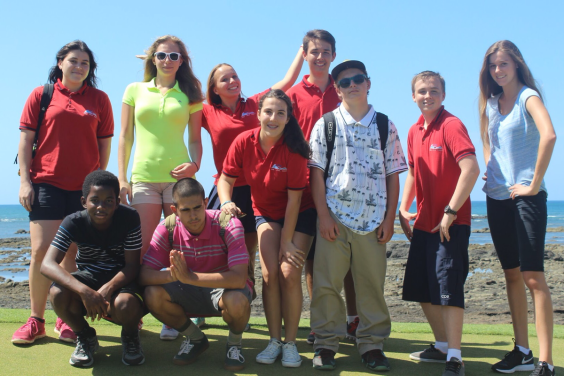
It’s one of life’s great ironies, but there are few things more unchanging than the promise of change. In education, including at many private schools in Costa Rica, this offer has long been on the menu. And yet, isn’t it also true that the more things change, the more they stay the same? It’s the ouroboros of the academic world. The truth is, for decades, major change to education has been more of a talking point than actual fact. (Case in point: See Part II of our Vote with Your Feet series: Despite university admissions officers’ talk of broadening the scope of what determines a candidate acceptance, a full 2/3 of all universities admitted “no change” to the weighting of their admissions criteria.) That is, until 2020, when COVID-19 swept through the world and changed our learning environments in a way few of us could have foreseen. Suddenly, schools weren’t making promises based around “multiple intelligences,” “project-based learning,” or other trends, but were instead united against one challenge: migrating standard in-person education to virtual platforms and remote learning. And if any of that makes you sigh (or wince), then first, a congratulations: You and your family have weathered the worst of it. The last year-and-a-half have been a challenge for all of us, students, parents, teachers, and school administrations, alike. You did it. And it’s nearly over. So, take a deep breath and let’s talk about the light that’s just around the corner. But First, Let’s Discuss “Trends” in Education Education – finding the right fit, nurturing your child or children, and fostering a life-long love of learning – is one of the most important jobs a parent has. It’s about more than setting your kids up for university success: Teaching your children to love learning is a gift that will perpetuate throughout their lives. The question is, should you ever leave this incredibly important aspect of your child’s formative years up to a fad? We know we’re wading into the technical stuff here, but there are dozens and dozens of educational fads that have failed over the years. Don’t make your student the guinea pig. Because, at its heart, education is about learning – not about the newest way to learn, but rather about achieving specific learning outcomes. (Of course, achieving those outcomes is dependent on teaching methods. But again, teaching methods should not be a trend; they are a path to reaching the individual student. And that’s something our teachers train for.) Academic Excellence is Not a Fad (But it is Our 2021-2022 School Year Theme) So, here’s the thing: Despite the trends (and, at times, the passing fads) in education, one requirement endures: Parents around the world continue to desire English-medium college preparatory schools. It is abundantly clear, from the enduring parent demand for standards-based curriculum – and by that, we’re talking definite not-trends, like the IB Diploma, British A-Levels, and Advanced Placement (AP) / Dual Enrollment programs (see which one is best for you) – that families seek academic excellence for their children first and foremost. You’re right about that. The best international schools in Costa Rica outperform international norms and demonstrate leadership in education. They do this, despite the pressure to adapt to the latest fad. Instead, they root their academics in time-tested, standards-based achievement. As you research and consider, you will recognize this trait at the best private schools in Costa Rica via their adherence to rigorous standards and benchmarks for student learning. Here’s the litmus test: If a school focuses on telling you that their curriculum is “project-based” or “inquiry-based” or “transdisciplinary,” they’re trying to ride the coattails of a trend to achieve a sale (aka tuition). They’re not actually telling you what standards to expect or what student outcomes you can hope for at each grade level at the end of year. And that’s what you are paying for in a school: the expected yearly academic progress within a balanced program. Post-Pandemic Education: Student Learning and Educational Benchmarks The past year+ has been a challenge but, as the light starts to flicker and grow brighter from the end of the tunnel – as we begin to see life and learning return to “normal” – you’re looking to what your child’s post-pandemic education will be like. At CRIA, you can expect it to look like our enduring and rigorous academic standards. We understand the challenges and roadblocks and potholes that have popped up in the past year, but we also know how to remedy them. We are prepared. Because the best private schools in Costa Rica use MAP assessments or similar external testing data (ex., IGCSE testing in a British curriculum) to track student learning in basic numeracy and literacy and subject level skills. At CRIA, we use MAP testing to determine student […]
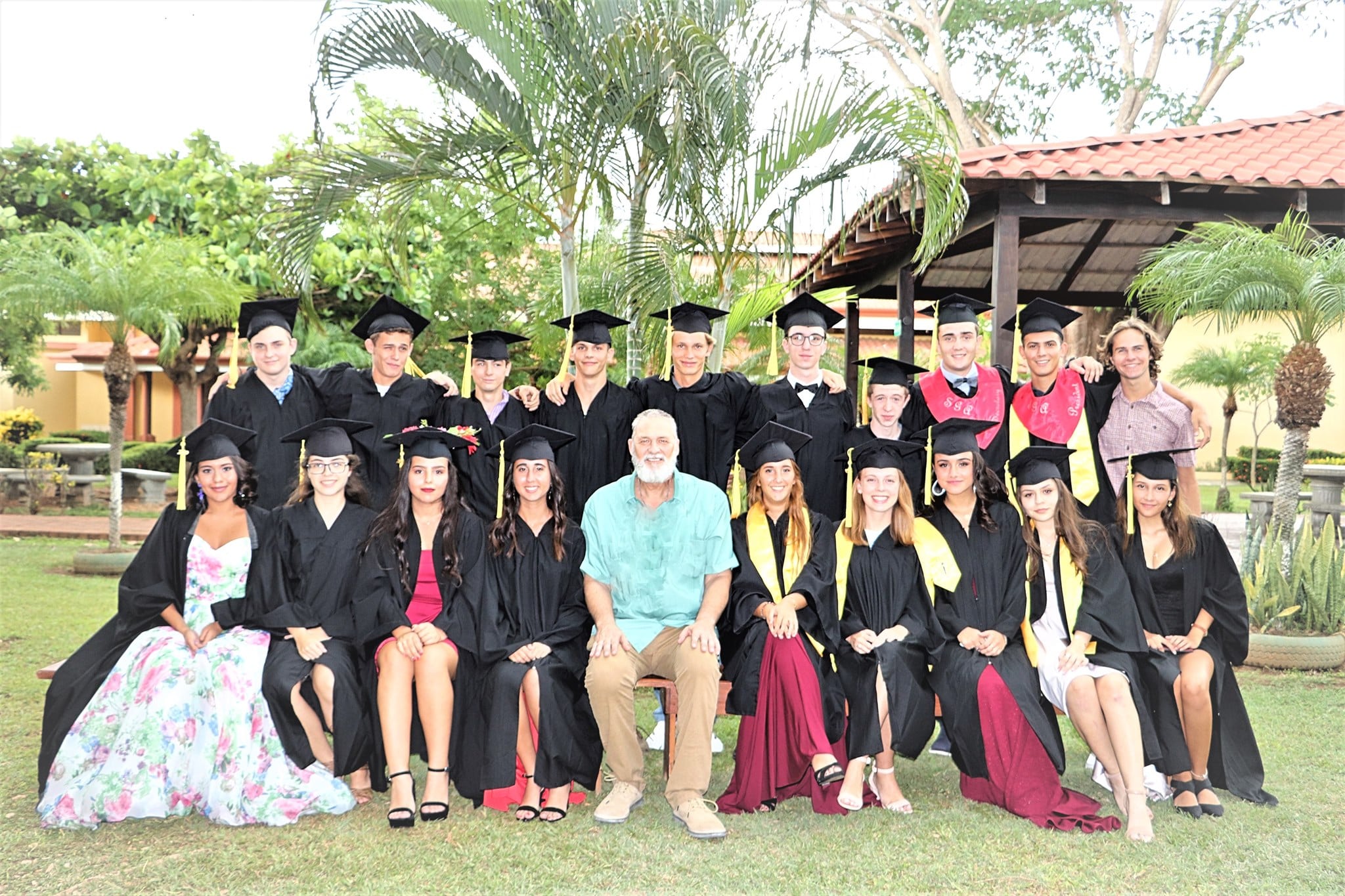
When evaluating education in Costa Rica, you’ve already voted with your feet: As a savvy and globally minded parent, you know what kind of academic experience you seek and you’re drawn to the benefits of international schools with an internationally accredited curriculum. The question is, when considering western-based programs, which is best: AP/Dual Enrollment, the International Baccalaureate (IB), or the British A-Level? (Note that this is Part II of our Vote with Your Feet series. See Part I.) This is a major decision: The trajectory you choose, even if your child/children are still in their early years, will influence their future academic paths and lifelong goals. And, as they grow, your choice will likely have a considerable effect on their futures, including their post-secondary opportunities. So, we thought we’d introduce you to three of the most popular academic programs for international education in Costa Rica. We’ll cover their strengths and weaknesses, pros and cons, and desired outcomes of each, especially as they relate to the Costa Rica education system, so you can make an informed decision for your family. Education in Costa Rica: IB Degrees, A-Level Programs, and Dual Enrollment/AP Courses When it comes to international schools in Costa Rica, there are three primary academic programs or paths: dual enrollment/AP programs, the IB Diploma, and British A-Levels. But before we get into that, let’s first talk about what we’re not going to talk about: Canadian and Australian curriculums. While it is true that there are excellent international schools running the Canadian and Australian curriculums, Costa Rican international schools almost universally opt for U.S., British, or IB programs. In fact, these programs dominate the international schools of choice around the world, over the past 20 years – and their growth is only accelerating. So, within the context of international education in Costa Rica, we’ll stick to the Big Three. The International Baccalaureate Diploma Program (IBDP) IB Diploma programs get a lot of the limelight because, when done right, it is a rigorous and college-level program (at the IB Diploma grade levels 11-12). That said, it can be difficult to get right – and herein lies the problem. Without getting too technical or administrative, you should know that IB programs are very expensive for a school to put in place, maintain, and administer. (And for parents to pay for; IB programs in Costa Rica are among the most expensive tuition in the country – but you don’t always get what you pay for.) But the challenge isn’t one of sheer cost: It’s the economies of scale. And Costa Rican international schools do not have the scale. The world’s top 100 IB schools have an average size of 75+ students per grade level, or 3-4 full classes of students enrolled in each year of the IB Diploma program. No private international schools in Costa Rica, much less those in Guanacaste and Tamarindo, operate on that scale. This is a key reason why smaller schools under the IB curriculum framework do not rank in the top: With smaller budgets, the heavy annual dues and training costs will necessarily displace other budget priorities required to ensure that all students achieve high results. What’s more, according to 2021 IB league tables, nearly 2 of every 3 of the top 100 performing IB World Schools use the British curriculum for kindergarten through grade 10, before transitioning into IBDP capstone courses. When smaller schools attempt to run the IB World School framework, without the necessary associated IB World School teacher training and resources, paired with resources aligned to British, U.S., or similar standards of content and skills, they not only fail to meet expectations, but they also do a disservice to their students. A-Level Cambridge (UK) The British curriculum has a well-earned reputation as the “mother of all curriculums” in the Western tradition. The reason boils down to a balance between academic rigor and simplicity. Upon completion of A-level grades 11-12, students can typically qualify for university credit with passing scores. Unlike with the IBDP program, A-levels have no additional requirements to bog down students with hours of additional responsibilities, i.e. integrating IB Theory of Knowledge (TOK) requirements across each course, hours of IB Community, Action and Service (CAS) requirements, a 4,000-word extended essay, and 3 standard-level required courses, all while the student tries to qualify for college credit in 3 higher-level IB courses. Bottom line: A-levels are here to stay and growing in popularity. As a parent, you can rest assured that your child is learning the basics of academic courses within a very well-balanced program with the highest of standards. Dual Enrollment & Advanced Placement (AP) Programs We’ll start by saying that, at CRIA, we’ve opted for an AP and Dual Enrollment program. That said, we won’t try to convince you that it’s right for your […]
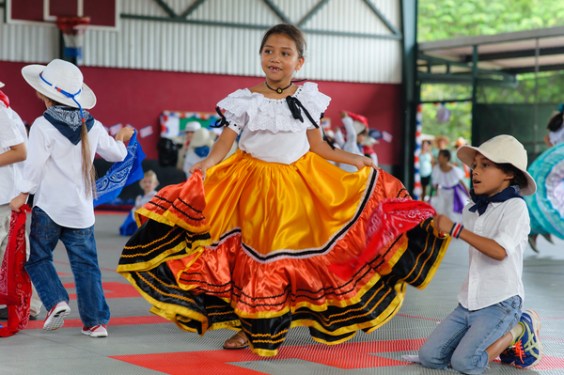
How Living and Studying in Costa Rica Will Inspire Your Child
Inspiration can be such a tricky concept; one child’s muse can be another’s ennui. Because it’s about so much more than finding a place to call home or even settling on one of the best international schools in Costa Rica: Helping your child find her inspiration, explore her interests, and pursue her dreams is a path every parent forges over the seemingly too few 18 formative years. It can be a little easier in Costa Rica, though. Here are four ways that nature, school, and everyday life can inspire your child to live well, live fully, and embrace every opportunity: The Wildlife. Oh, The Wildlife! If we lived in Antarctica, maybe we’d be blasé about penguins and overjoyed to see squirrels. Maybe… But, here’s the thing: Whether you’ve been in Costa Rica for a day or a decade, you don’t get tired of seeing monkeys in the backyard. You never stop grabbing for your camera when an iguana waddle-runs over the grass. You are in awe, every time a baby sea turtle makes its way to the sea. And you always, always look up when you hear scarlet macaws squawk. There’s just something about Costa Rican wildlife! And so, while you will teach your child everything you can, and while you’ll send him to one of the best international schools in Costa Rica, you’ll soon find that some of the most inspiring moments of his life reside in his own backyard. Who knows? He may grow up to become a marine biologist or a wildlife conservationist. Or he may just learn to love and respect wildlife (even the creepy-crawly and the slithery kinds), on a deeper level. One thing is for sure, though: Living and studying in Costa Rica will inspire in him awe and wonder – abiding respect for nature, wildlife, and the delicate biodiversity that keeps our ecosystems balanced and thriving. Education at the Best International Schools in Costa Rica While all things are relative, Costa Rica’s private schools are surprisingly affordable for many international families. That means that your child can have access to an exceptional education and one of the best international schools in Costa Rica – the best of the best, without the sky-high price tag you’d pay for the equivalent back home. And that equates to inspiration. Here at CRIA, we foster a learning environment rooted in your student’s interests. What inspires your child? What are her hobbies, her interests, her passions? We hope to nurture them through both our curricular and extracurricular programs, for example: Visual and the Performing Arts: Both primary and secondary students at CRIA have access to our Visual and Performing Arts department, where we explore everything from project-based learning for the younger set, to upper-level classes focused on various art techniques, art history, and creative expression. As we foster the next generation of artists and performers, we invite them to participate in our annual talent show, our Christmas show, and other events. Sports: Sports are woven into the fabric of student life at CRIA. Among other offerings, we offer strong extracurricular programs in surfing, soccer, artistic swimming (and swim team), basketball, gymnastics, cheerleading, aquatic ballet, track, and more. Model United Nations: Nurture your young diplomat’s interests with this classic and always relevant education simulation, which allows your child to explore diplomacy, international relations, and more. Music: Budding musicians not only take music classes but are invited to after-school activities, including piano. STEAM: From robotics and Legos to coding and chess club, our extracurriculars also fuel and inspire your student’s cerebral pursuits. National Honor Society: More than scholarship, the National Honor Society is for students who also value leadership, character, and service to one’s community. Your solid citizen will not only find accolades here, but plenty of inspiration on how he may go forth and make the world a better place. Inspiration is so much more than a list of opportunities and options, so we’ll leave it there. But, suffice it to say, access to one of the best schools in Costa Rica can help your child not only identify his interests but foster them. An International Lens The world is a vast and wonderful place, but we don’t always have time to fully explore its every corner. Living abroad, even if just for a few years in childhood, can change your child’s life forever. There is something incredibly inspiring about stepping outside your comfort zone and into a “foreign” culture. Because, before you know it, it’s no longer foreign; it’s home. This long-term exposure to new experiences is an inspiration in itself: Equipped with such a stimulating, formative, and influential experience, it will surely direct and inform her future paths. She may grow up to be an anthropologist, an ambassador, or an interpreter for the UN. Or, she may […]

Make The Move to Costa Rica in 2022! Why Guanacaste is the Perfect Place For Your Family
Living in Costa Rica is the dream of many. For here is where you swap your snow skis for blue skies, your snowboard for a surfboard, and your ice-scraper for sunglasses. And so, you’re off and down the rabbit hole, searching out the best places to live in Costa Rica with a family. Because moving with kids? That’s its own ballgame. While you may not be worried about pensions or specialized hospitals, you are worried about international schools, extracurriculars, and your kids’ quality of life. You don’t just want your family to survive a move to Costa Rica from the USA; you want to flourish here. And that brings you to right now: you’re considering not just Costa Rica, but Guanacaste. Probably the Tamarindo area. Because you’ve heard great things. The beaches are great. And the lifestyle – well, it fits your dream to a T. So now you’re wondering, could this be it? We say it could. Here’s why: Reason #1: Year-Round Near-Perfect Weather Think about family life in summer vs. winter. If you’re thinking about a move to Costa Rica from the USA, chances are, you’re not at your happiest when you’re shoveling snow or even jumping into leaf piles. You love the spring and summer months. And if that’s the case, then you’ll love your family life here. There’s one major, warm, and very sunny reason why Guanacaste is considered one of the best places to live in Costa Rica with a family: the weather here is nearly perfect. In addition to year-round temperatures in the 80s and 90s (about 26-35º C), our privileged province is drier than the rest of Costa Rica. So, while much of the country splashes its way through 7+ months of rain a year, we have a shorter rainy season AND our rainy season days aren’t quite as rainy. And that means more time to live, dine, and play outdoors. Every day of the year. Reason #2: The Great Outdoors As parents, we know how hard it can be to keep our kids engaged in family life (especially as they mature from little kids into big kids, tweens, and teens). It’s a little easier when you can tempt them with surfing and ATV rides, stand-up paddle boarding and tropical forest hikes, snorkeling and swimming beneath a waterfall. Here, you’ll play more often. You’ll adventure as a family. You’ll discover new things. You’ll learn incredible new skills and sports. And, if you’re anything like most families, you’ll really field “Can we?! Can we?!” questions, every week, for years to come. Costa Rica is a natural playground and a sun-splashed wonderland, where you can find a new trail to hike, a new cove to snorkel, a new beach to surf, and a new route to paddle, for every day of the year and for many years. Talk about family memories and quality time together! Reason #3: Excellent International Schools Obviously, a quality international education is something very near and dear to our hearts. But we’ll start with this: When you’re looking for the best places to live in Costa Rica with a family, you must also consider the educational offerings. Because not every town in Costa Rica offers international schools. (Not even a single international school, in many places!) And yet, an international education is likely important to your family. The benefits of an international education (vs. your standard Costa Rican private school) is that it prepares your children for future success: Whether you plan to raise them fully in Costa Rica or just spend a few years here, whether they go to university in Costa Rica or abroad, whether they plan to live in Costa Rica forever or return to your home country – an international school like CRIA gives them the tools and the options to take any path they choose. Want to know more? Check out the 9 essential questions to ask when considering international schools in Costa Rica and the 3 essential attributes of an international college preparatory program. Reason #4: A Multicultural Community and Welcoming Home You know how some things in life just “click”? Like that perfect friendship – the one that felt like you had been friends forever, even when you’d only recently met – or the exact moment you knew which major to choose or what you wanted to do for the rest of your life… Guanacaste is like that, for a lot of families. In a country as small as Costa Rica, it’s easy to think that any one place would be similar to any other. And yet, that’s not the case: For as small as we are, Costa Rica’s regions and towns and communities are very different. And Guanacaste is special among them. Ours is a multicultural tapestry – one we can enjoy, not just […]
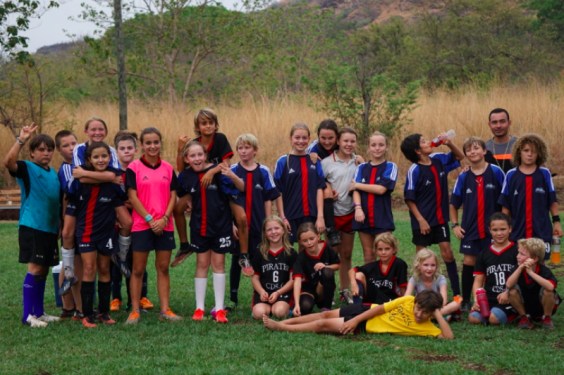
You’re a parent and that means you’re absolutely sure that you want the absolute best for your child or children. Defining that “best” is the hard part, especially when considering international schools in Costa Rica: What do all these acronyms mean, does the school align with your priorities and, most importantly, will your kid(s) be happy there? These nine questions will help. #1: What is the school’s vision and mission statement? How do they work to achieve these goals? It’s important that your vision and goals as a parent are seen, understood, and reflected in the school you ultimately choose for your child or children. The best schools in Costa Rica will know this and embrace your questions. Their academic mission and vision should be very clear on their website and throughout all communications. And ultimately, these should resonate with you: Your values, vision, and mission should align well with the school you choose. At CRIA: We are proud of our vision and mission, which we share clearly on our website and embody throughout all our practices and policies. We value strong academics and our mission is to provide a college preparatory program from Toddler to Grade 12; our curriculum is aligned to prepare students for success in tertiary education. #2: What is the school’s academic approach and what international school curriculum do they use? School shopping can be challenging, even when you’re on your home turf. Visiting and interviewing international schools in Costa Rica is an even greater challenge, especially when you’re juggling multiple curriculums, accreditations, and all manner of monikers, acronyms, and labels. The basic takeaway is this: Most international schools offer some type of international curriculum, usually associated with a country (ex. U.S., British, Singapore, etc.) or the International Baccalaureate (IB) diploma. Both the content that they teach and the ways that they teach that content are dependent, at least in part, on that curriculum. This curriculum is of particular importance if you’re only spending a set amount of time abroad or your student(s) plan to attend a non-Costa Rican university. At CRIA: Our English-based, dual-language curriculum foundation is adapted from the Virginia State Standards of Learning (SoL). CRIA’s standards-based curriculum begins in the early years and culminates in a college preparatory Advanced Placement (AP) program and our dual enrollment program with Grand Canyon University, which allows our students to earn credits not only for high school but toward their college transcripts. #3: What accreditation does the school hold? This is the perfect follow-up to the above question – and an incredibly important consideration for ALL parents, regardless of your residency permanence, future goals, and all other factors. First things first: Only choose an accredited school. (Believe it or not, non-accredited schools exist.) Accreditation is academic shorthand for quality assurance and quantifiable benchmarks: a strategic focus on academic outcomes within a balanced program, which is then externally accredited by an accrediting agency recognized by the US Department of Education (or by Cambridge, in UK curriculum schools). At CRIA: You may be surprised to learn that some of the best schools in Costa Rica are not dually accredited. In fact, CRIA is the only U.S. and MEP-accredited school in Guanacaste province. We have both U.S. accreditation (MSA) and Costa Rican (MEP) accreditation (link is a download), which means that your student will receive transcripts and a diploma recognized both by the U.S. and Costa Rica. #4: Is it easy for students to transfer to Costa Rican, U.S., or international private schools? What is the international college acceptance rate? A perfect follow-up to the follow-up, this question digs into the heart of the matter: Accreditation ensures quality and curriculum influences learning, but everything comes down to your lifestyle and future goals. Do you plan to live in Costa Rica forever? Do you already have a date to return “home” (and transition your kids back to school there)? Will your children attend university abroad? At CRIA: Life has taught us never to say never, so we help you hedge your bets all-around. With dual accreditation (U.S. and Costa Rica) and an international college preparatory curriculum, we make it easy for students to transfer to U.S. or Costa Rican primary/secondary schools, as well as for acceptance to Costa Rican, U.S., and international universities. We have a 100% graduation and college acceptance rate, and our recent acceptances include Brown University, Seton Hall, Bucknell University, Carnegie Mellon University, the University of Florida, and UC Berkeley. #5: What is the makeup of the student body? While almost all international schools in Costa Rica offer a certain level of diversity, however you define it, what you’re really looking for is a good fit for your family. Is there a majority nationality? What language dominates the lunchroom, hallways, and playground? Are there other students with a similar national background to your […]
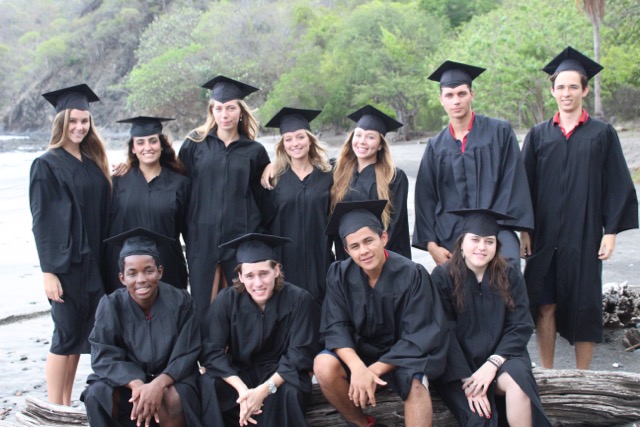
Ambitious students (and their parents) often ask, what do colleges look for in an application? The good news: Despite the seeming ambiguity that surrounds college admissions, the answer may be more clear-cut than you think. Even better, a Costa Rica education at CRIA, one of the top international schools in Costa Rica, can give your student a leg up. We know that this veil around the college admissions process is often a primary source of stress for high schoolers, who are either looking ahead to future admissions or staring down their junior-year applications. Because there is no set checklist to get into college – no step-by-step guaranteed in. The whole process can feel ephemeral and subjective. Try to approach applications from an end-goal perspective: What do colleges ultimately want? In short, they want students who will contribute positively to their university environment. They seek students who have demonstrated proven success in various facets of academic life. And they select students who trend upward – who accept challenges and show positive growth patterns. So, as you tackle each application, ask yourselves: How can I demonstrate that I’ll flourish here? And in that, CRIA can help. #1 – Colleges Seek: Students Willing to Challenge Themselves College admissions love students who challenge themselves, both as a sign of good character and as an indicator that the student will strive to succeed in university-level courses. A Costa Rica education, particularly one at an international school, demonstrates not only a willingness to face challenges but also the gumption to overcome them. CRIA Delivers: It begins with your student’s route to choosing one of the top international schools in Costa Rica: If you moved to Costa Rica from abroad, then your college applicant has already faced the challenges of uprooting his or her life, moving to a new country, tackling a second language, and acquiring a new culture. If you chose an international school as a Costa Rican student, then your child has stepped outside his or her comfort zone and into a school environment comprised of many cultures, languages, and even curricular challenges. Beyond the unquantifiable, a Costa Rica education at CRIA is very academically rigorous. Beginning even in the early grades, we help you and your student to plan ahead – to build a foundation for future goals. If those include university, then we’ll get your student on track with college counseling, an appropriately challenging course load, and AP and dual enrollment classes, when applicable. #2 – Colleges Seek: Academic Achievement There’s no denying that strong universities seek strong students. If a young person’s goals include higher education, then they should plot a set path to academic achievement: Hard work and a solid foundation in the early years help build the basis for strong high school achievements and, ultimately, a strong college application. What does this look like? It will depend on the university but, generally speaking, and from an academic standpoint, they seek strong grades in core subjects (math, science, history, English, and a foreign language), with a preference for honors classes, AP courses, and dual enrollment. Strong efforts, an upward trend, and solid grades in these courses are often weighted more favorably than straight-As in less challenging courses. CRIA Delivers: Beginning in primary and middle school, we work to build a pre-AP foundation to prepare students for success in high school AP and dual-enrollment courses. Our curriculum foundation is adapted from the Virginia State Standards of Learning (SoL), to make transitions to U.S. high schools and international universities as smooth as possible. CRIA Profile of a Graduate Our CRIA students demonstrate a strong academic foundation in the following areas: Knowledge and inquiry processes that allow informed decision-making Mathematical and scientific thinking and communication processes Coherent communication in English and Spanish, in the four modalities of language learning: reading, writing, listening, and speaking Responsible, safe, and effective use of technology to demonstrate a high level of electronic literacy for education Analytical and critical reading of a wide range of texts #3 – Colleges Seek: Authenticity We know it’s a buzzword – but it’s also today’s reality: Schools want applicants who are their “authentic selves,” both on college applications and as they enter in and proceed through university life. CRIA Delivers: At CRIA, we strive to bring out a student’s authenticity – not because it’s a trend or even because it’s desirable on applications, but because self-assurance and confidence are qualities that we believe students should acquire. Self-assured, confident young people are students who know how to identify their priorities, pursue interests, and map out the path to their future goals. Because CRIA is about education: not just schooling, but well-rounded, whole-person education. As one of the top international schools in Costa Rica, CRIA offers some of the best academic programs and the most […]
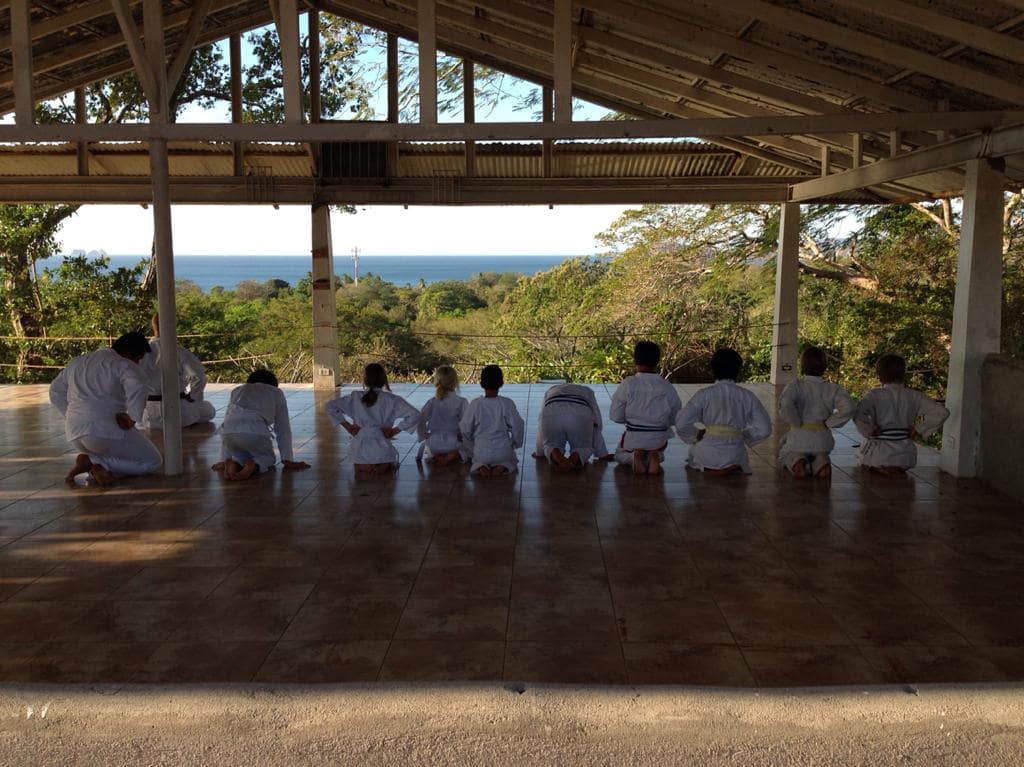
What do you care so deeply about that you’re willing to actually do something about it? Schooling is likely one of those things. The best Costa Rica international schools offer more than academics: Your choice of private school reinforces how you will raise your children – how you will shape their formative years. There’s an old maxim: “If you want to know what people really value, watch how they vote with their feet.” The core idea is that, while casting a ballot or voicing an opinion is unlikely to vastly change an individual’s trajectory, the personal decisions you make, and especially the places you choose to go, can significantly impact your life. And so, while “foot voting” traditionally refers to political freedoms, today it also extends to the cultural and lifestyle impacts of voting with one’s feet. And in your case, as a caring parent, of seeking out and eventually choosing one of the best Costa Rica international schools. Because you’ve already voted with your feet once: You’ve either made the life-changing decision to move your family and raise your children in Costa Rica, or you’ve chosen to commit your Costa Rican children to an international education. To introduce them to new people and perspectives. To prepare them for a world beyond today. And now, you’re poised to cast your next “foot vote” – to choose where to educate your children. How you will shape their formative years. What you will do to prepare them for the competitive world that awaits after graduation. Education: More than Just Academics at the Best Costa Rica International Schools Great parents give their children the very best opportunities in life. And, for most, this begins with education. Not just schooling, but well-rounded, whole-person education. In Spanish, we use the verb educar to refer not only to schooling our children, but to raising them well, in every sense of the word. Educación is the opportunity to explore and grow, to develop thinking skills and build a solid knowledge base. To become someone who is confident and capable, accomplished and yet always hungry for greater learning. To cultivate the skills required for this ever-increasingly competitive world of ours. Likewise, the verb’s derivative adjective, educado/a, describes someone who is educated both in knowledge and in the world: As learned as they are well mannered and personable. A critical thinker. A compassionate human. The kind of person you want on your team, in your group, and at your workplace. International Schools: Trending Toward Global Success This transition to a well-rounded education and international schooling has accelerated for expatriate and national families in every corner of the globe. Over the last 20+ years, international school options have expanded rapidly. A recent report from ISC Research summarizes this trend in great detail: In one generation, the number of international school students worldwide has grown over 500%, from less than 1,000,000 to nearly 6,000,000 students. The driving factor: Parents understand that a quality education is one of the best investments they can make in their children’s future. CRIA is one of the best Costa Rica international schools, not only for our rigorous college preparatory program but for our three-pronged, individualized approach to education: Think: We teach our students how to learn, to help them develop the critical thinking skills that will carry them through a lifetime of success. Aspire: At CRIA, we care about our students’ goals and aspirations. Instead of trying to hammer square pegs into round holes, we have designed our curriculum around a wide range of student interests, including sports, the visual and performing arts, universal values, health, bilingual language opportunities, and leadership/team participation in co-curricular activities, among others. Achieve: Our student-focused program fosters a positive growth mindset rooted in hard work, perseverance, and personal responsibility. Our students – your children – truly are the future, and we work every day to make it a bright one. Strength in Numbers: The Best Costa Rica International Schools Believe in Education Equity Voting with your feet resides at the heart of this education evolution: In almost every country, there is strong demand for Western-oriented, English-medium international schools. And within those schools, there are large communities of administrators, educators, and families who lobby for equity of access to quality education, for ALL students. The result, especially in a country like Costa Rica – located close to the United States and Canada and, thus, well-positioned for nearshore contracts and employment – is a strengthening of English-language learning throughout the private and public school systems, further leveling the playing field for even the most disadvantaged students. As another maxim goes, a rising tide lifts all boats. And, it’s true: As this graph from the University of Winnipeg demonstrates, the English language has become a requirement in public school systems across many countries. Out […]

Hey, parents – you have a big job ahead of you! Raising a good human is fulfilling but hard work. Choosing the school where they’ll spend 5, 8, even 13 years… well, that’s a big component to the journey. International accreditation is the first element to look for in the best private schools in Costa Rica. Why accreditation? The short answer is quality assurance. Of the most prominent international schools, accredited programs offer quantifiable benchmarks: a strategic focus on academic outcomes within a balanced program, externally accredited for quality assurance by either one of the accrediting agencies recognized by the US Department of Education, or by Cambridge in UK curriculum schools. Accreditation is the first step in assessing the quality of international schools. But it’s not the only question. So, once you have that answered, here are three more questions to ask your candidate schools: Question #1: What standards of content and skills do you teach your students? In education, this is what we call the elevator pitch: the quick, off-the-top-of-their-head monologue that any classroom teacher or school administrator should be able to recite, be it on an elevator ride, shaking hands for the first time, or at school drop-off/pick-up. In other words, this is The Question and it shouldn’t be a hard one. In fact, if the school’s chosen representative can’t immediately tell you about student learning outcomes, in the form of international standards and benchmarks, for any subject, then you should be concerned about the program’s quality. Likewise, if teachers or school administrators begin describing teaching – textbooks, strategies, values, or methods they use, in all-too-familiar language like “we offer project-based learning,” “we are inquiry-based learning,” “we are teaching global citizens,” or “we are an anti-racist focused school” – then you’ve come up against another warning sign. This type of answer – or rather, non-answer, as learning outcomes go – is typical in schools with priorities other than improving student academic achievement based upon academic standards. Not that those textbooks, strategies, values, and methods don’t matter. They do. They’re important. We all want children to experience hands-on learning, to be inquisitive, and to grow into mindful, productive citizens. But none of these answers provide clear focus on defined academic student outcomes that can be measured against worldwide peers. Because, whether your child is headed to the Ivy League, to culinary school, or to any of the world’s other competitive futures, he or she will be measured against his or her peers. An excellent international school makes sure he or she measures favorably. So, if all you hear are buzzwords about transforming student learning, project-based learning, inquiry-based learning, transdisciplinary learning, multicultural or cultural competency learning, authentic learning, dismantling or abolishing traditional learning, then you’ll need assurance (and proof) that academic focus will not be deprioritized. At CRIA, we care about our families. Our students are, by definition, global thinkers and we, as a school, have built an individualized approach to learning. But methodology does not define the CRIA academic experience: Instead, we stand out for our academic excellence, benchmarks, and learning outcomes. Go ahead, put us to the test: Ask any teacher or administrator, and see what they say! So, ask the question. And if you get one of the above-cited answers, seek greater detail, “I’m not asking how you teach, but want to know what you teach.” What you want to hear: identifiable content, as well as thinking and learning skills, defined for each grade level and subject area. Put it this way: As you interview candidate private schools in Costa Rica, remember that every class and subject should have easily understandable and defined student outcomes for English, another language, math, science, social studies, PE/health, visual and performing arts. Question #2: How do you know that my child is succeeding? Promises and declarations are nothing, without facts to back them up. When seeking an internationally accredited program at one of the top private schools in Costa Rica, parents should receive a very understandable answer, at least for high school-level classes. The three main prescribed content curricula found at Costa Rica’s best international schools are the US Advanced Placement (AP) program, the British A-level program, and the International Baccalaureate (IB) Diploma Program. Additionally and increasingly, university dual enrollment programs are also gaining important momentum at the best international schools worldwide. (We’ll discuss more on the differences between these curriculum options, in Part III of this series.) At CRIA, we deliver very compelling value in allowing our high school students to achieve university credit for work done while at CRIA. The fastest growing and most robust curriculum to this purpose is our dual enrollment program, in which we partner with Grand Canyon University to allow our students to earn credits not only for high school but toward their college transcripts. […]
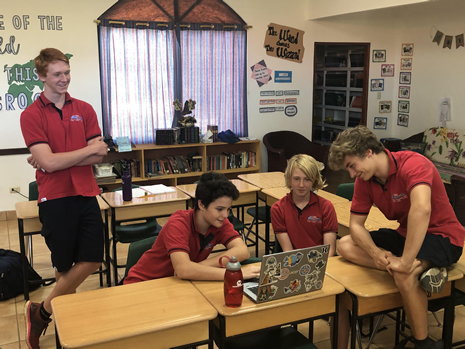
Special education in Costa Rica is more than a checklist: It’s a fundamental element of a well-balanced and diverse international school. At Costa Rica International Academy (CRIA), our incredible student body is incredible, in part, due to our diversity: One-third Costa Rican, one-third U.S., and one-third from 22 other countries – in total, students from 24 nationalities and teachers hailing from 8 countries. Here’s another fundamental element in our equation for incredibility: CRIA’s demographic diversity brings to the table not only valuable and diverse perspectives, but also a diversity of learning exceptionalities: Some CRIA students are of high ability, some come to us with minimal English (ELL) or Spanish skills, and still others have learning disabilities/exceptionalities that require a learning support program (LSP) and Individualized Education Plan (IEP). That’s where we come in. The best international school programs, including at CRIA, value diversity of perspectives above all, with particular importance placed on the inclusion of a wide range of special needs/exceptionalities within the mainstream program.

